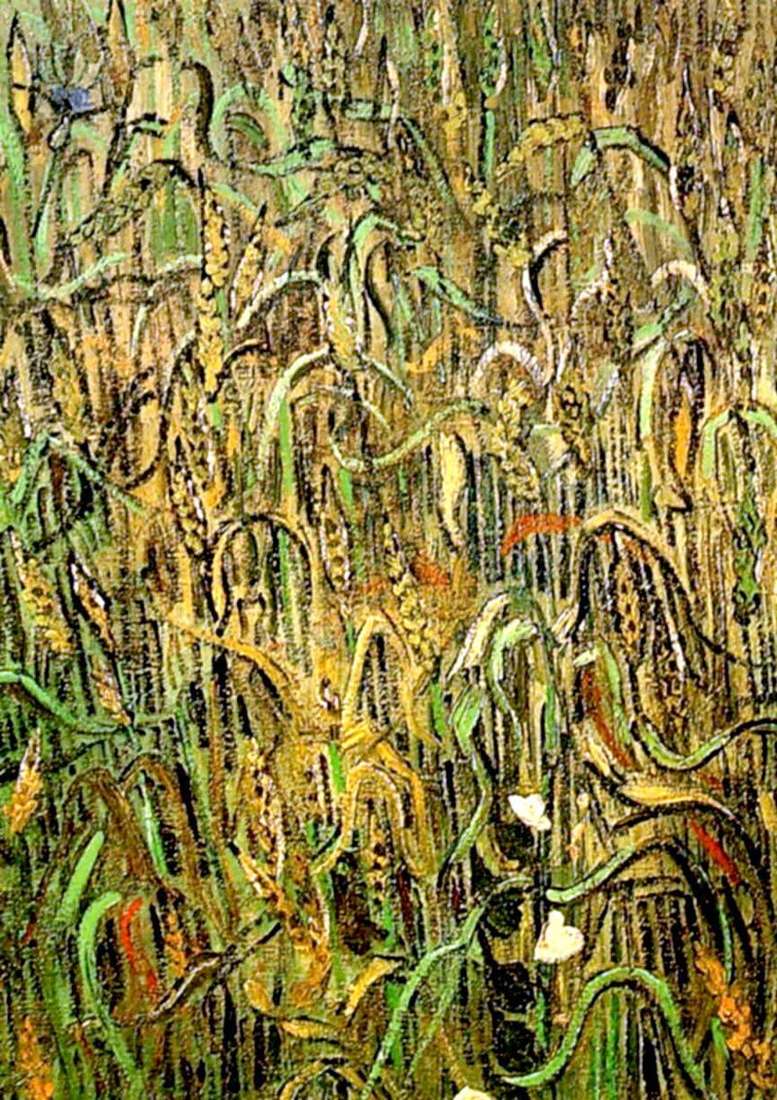
In the spring of 1888, Van Gogh dedicated the depiction of flowering tree trees, in the summer of this year he turns his attention to wheat fields around Arles with peasants cultivating the land and harvesting crops. The artist worked with great intensity.
For example, in June 1888, in just one week, he created ten oil paintings and drew five drawings. Every day he went out into the fields with a sketchbox to start working, and neither the scorching sun, nor the wind, nor the rain could prevent it.
Wheat ears, worried in the wind like sea waves, gave the artist an excuse for experiments. He found new color solutions and ways of applying smears to convey and convey to the viewer what he saw with maximum expressiveness and expression.
In the film “Wheat Field and the foothills of the Old Alps in the background” the artist divides the composition into three horizontal parts. The horizon line with bluish hills and slender cypresses is raised very high, which gave the author the opportunity to fill almost the whole space of the canvas with the colors seen on the wheat field.
The golden color of the ears in the background is contrasted with the riot of red, yellow, brown, lilac and yellow strokes, whirling the bottom of the picture.
 Wheat Field with Cornflowers by Vincent Van Gogh
Wheat Field with Cornflowers by Vincent Van Gogh Green wheat field with cypress by Vincent Van Gogh
Green wheat field with cypress by Vincent Van Gogh Crows in a wheat field (Wheat field with crows) by Vincent Van Gogh
Crows in a wheat field (Wheat field with crows) by Vincent Van Gogh Farmhouse on a wheat field by Vincent Van Gogh
Farmhouse on a wheat field by Vincent Van Gogh Wheat field with a lark by Vincent Van Gogh
Wheat field with a lark by Vincent Van Gogh Wheat ears by Vincent Van Gogh
Wheat ears by Vincent Van Gogh Green wheat ears by Vincent Van Gogh
Green wheat ears by Vincent Van Gogh The edge of a wheat field with poppies by Vincent Van Gogh
The edge of a wheat field with poppies by Vincent Van Gogh